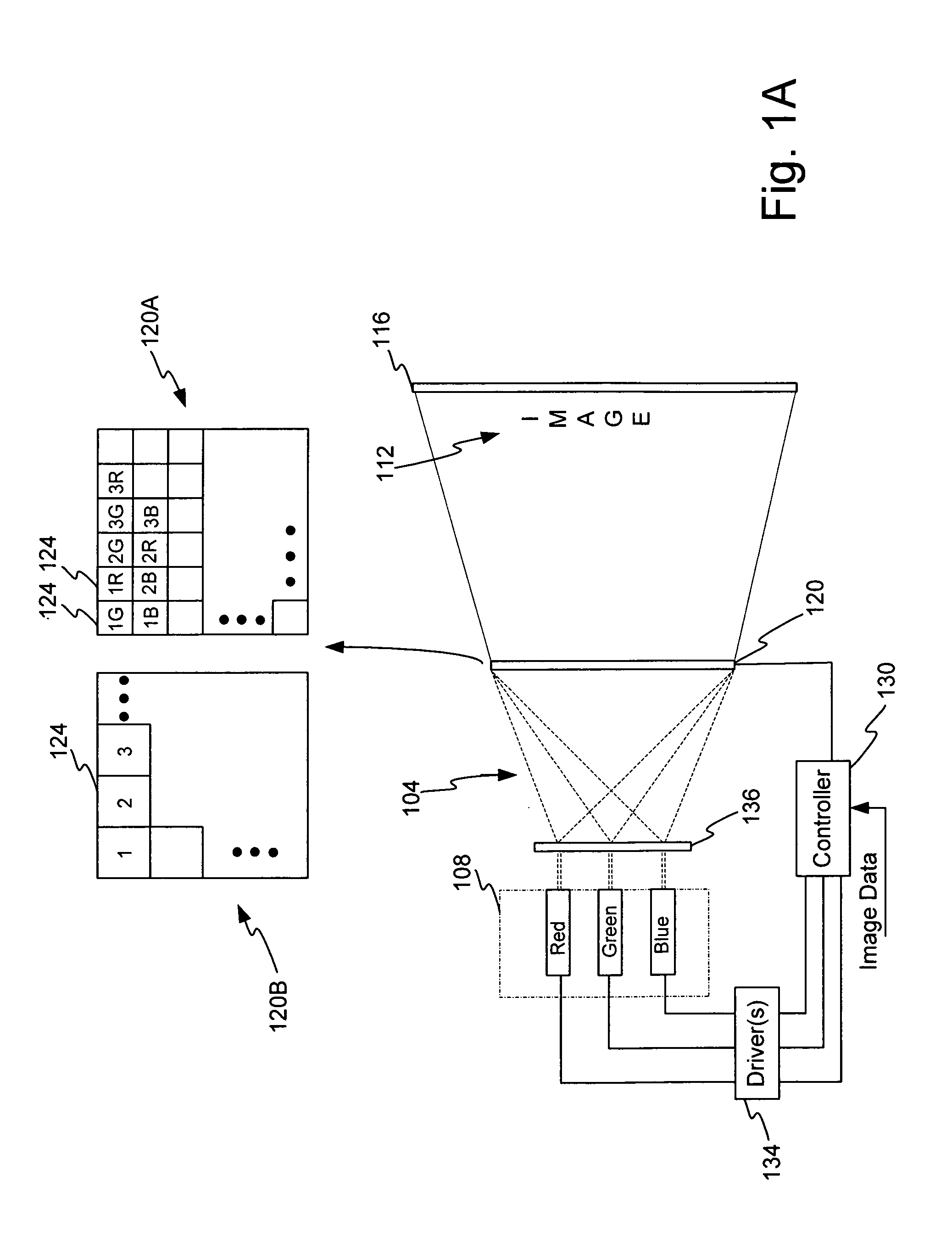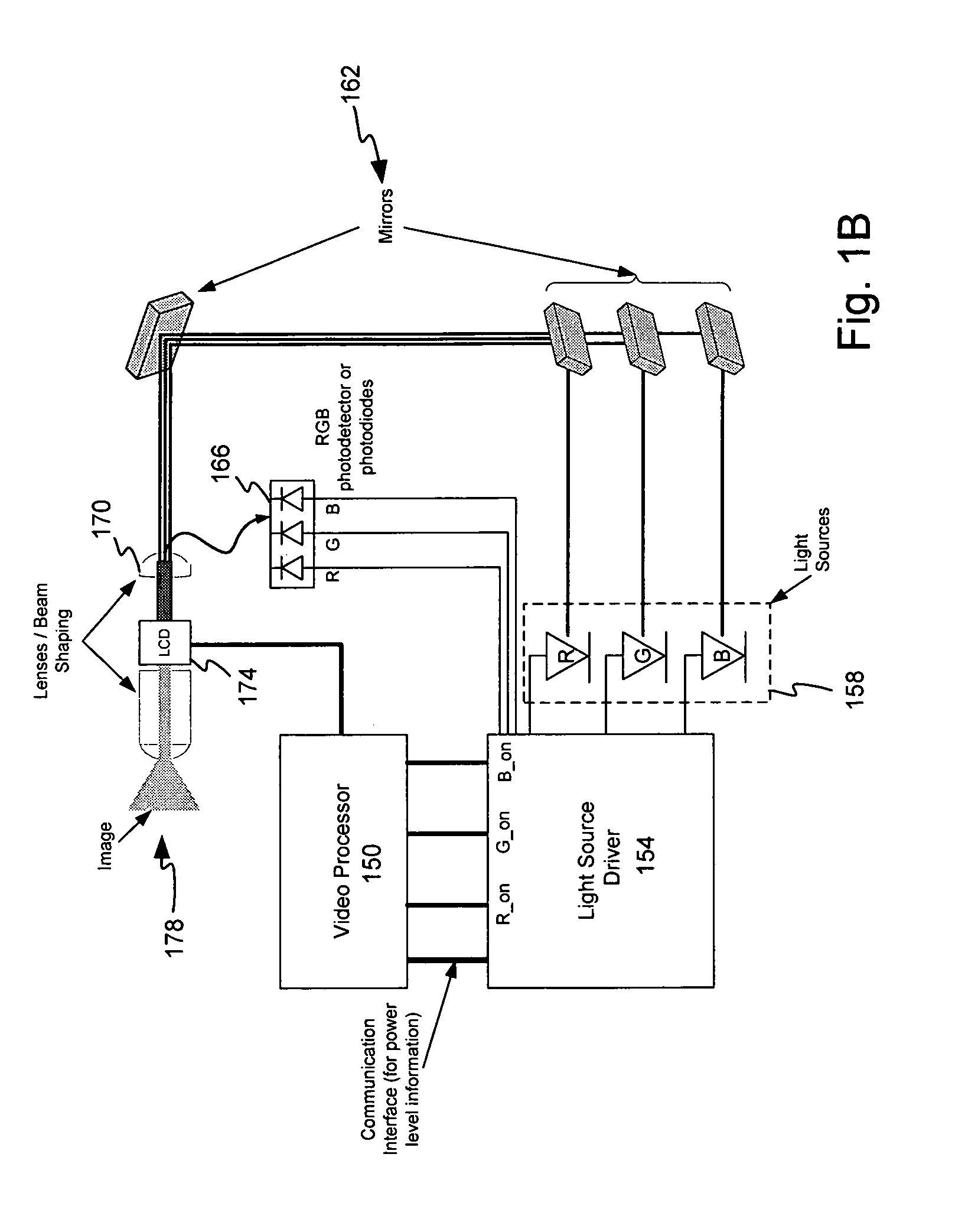Reducing power dissipation in portable LCOS/LCD/DLP portable projection systems
a projector system and power dissipation technology, applied in the field of projector systems, can solve problems such as affecting white balance behavior, color fidelity and image quality, degrading image quality, and adjustment of white balance and contrast, and achieve the effect of reducing power consumption
- Summary
- Abstract
- Description
- Claims
- Application Information
AI Technical Summary
Benefits of technology
Problems solved by technology
Method used
Image
Examples
Embodiment Construction
[0030]In an example environment shown in FIGS. 1A and 1B, a projector system is disclosed wherein light 104 is provided by 3 light sources 108, such as a red light source, green light source and blue light source. In other embodiments, different number of light sources may be utilized. The light sources 108 may comprise a laser, LED, or any other light source. The output of the light sources is provided to an optical system 136. In this embodiment, the optical system 136 comprises one or more lenses, mirrors, or both. The optical system 136 directs or focuses the light to a pixel matrix 120. The optical system 136 may be passive or active. The image 112 is created by shining on and filtering these colors through the pixel matrix 120. In one embodiment, the pixel matrix 120 is an LCD / LCoS system. In other embodiments it can be a DLP engine. The pixel matrix 120 is a matrix of pixels 124 where each one can be made transparent or opaque to light, or some level of opaqueness between tra...
PUM
 Login to View More
Login to View More Abstract
Description
Claims
Application Information
 Login to View More
Login to View More - R&D
- Intellectual Property
- Life Sciences
- Materials
- Tech Scout
- Unparalleled Data Quality
- Higher Quality Content
- 60% Fewer Hallucinations
Browse by: Latest US Patents, China's latest patents, Technical Efficacy Thesaurus, Application Domain, Technology Topic, Popular Technical Reports.
© 2025 PatSnap. All rights reserved.Legal|Privacy policy|Modern Slavery Act Transparency Statement|Sitemap|About US| Contact US: help@patsnap.com



